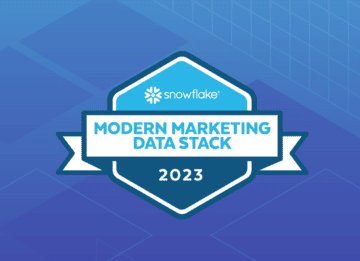Once More With Feeling: Emotional Marketing
For marketers, learning to inject emotion into messaging and customer experience can help give customers and prospects a positive relationship with your brand. This can be extremely important to ensure the lifetime value of your customer and eventually, turn them into advocates for your business. When you consider that 70% of the buying experiences are based on how the customer feels they are being treated, learning how to interact with your customers in a genuine way is crucial.
Emotional marketing uses inspirational, aspirational, and sentimental messaging and imagery to create a strong customer experience. When done correctly, this method of marketing turns transactional relationships of buyers and sellers into authentic, loyal relationships between people and brands.
Why does emotional marketing work?
Whether you realize it or not, emotions and feelings play a paramount role in our decision-making. Is there a specific reason you reach for a Coke instead of a Pepsi? Do you buy products that your hairdresser or mechanic suggests rather than what you see in the store? We tend to buy the same products, go to the same grocery story and use the same brands over and over because of the emotional value we associate with the company, product, or service.
At some point, a brand or a product connected with us on an emotional level, and perhaps provided us with a great customer experience that kept us coming back. Building a relationship with customers using emotional marketing can create a buyer for life. If done incorrectly just once, it can produce a sense of inauthenticity that will turn customers away forever.
Accurate customer data is essential to creating a comprehensive customer view that allows marketers to engage with their audience in a meaningful way. Unfortunately, only 49% of marketers use data to enhance customer experience. Using a data-driven approach to emotional marketing helps generate:
Messaging with meaning
Learning not just who your customers are but what they enjoy can help take the guesswork out of your marketing. Customer intelligence and social data provide another view into where your customers spend their time online, the brands and causes they follow, and their interests. These insights can help you decipher which emotion to appeal to and how to sincerely position your brand, product or service to get the required response.
Two-way interaction
To be truly customer-centric, you have to create opportunities to not just speak to but also listen to your customer. Layer engagement with your customer across platforms by implementing a single view inside your database. Using identity resolution and enhanced customer data, you’ll be able to tell who your customer is, how they’ve interacted with your brand, and the best way to communicate to them in an authentic way.
Relationships that last
Most business interactions involve a path from site, to store, to sale but the relationship doesn’t have to stop there. You can keep the conversation going and continue to provide value using personalized messaging to create thank you emails, special offers, implementation support and how-to guides. Taking the time to make sure your customer is up and running with your product or using it in ways they may not have expected goes a long way to providing a great experience, excellent support and, most importantly, the authentic interaction with your customer.
You can learn more about creating great customer experiences with technology and data during the keynote session at Connect ‘18. Max Stossel, Co-Founder of Center for Humane Technology will explore what ‘meaningful connection’ looks like in the digital age and how technology can help.

Recent Blogs
-
 September 21, 2023 Discover How FullContact is Building Trusted Customer Relationships through Snowflake's Native Application Framework Customer 360, Website Recognition, Identity Resolution
September 21, 2023 Discover How FullContact is Building Trusted Customer Relationships through Snowflake's Native Application Framework Customer 360, Website Recognition, Identity Resolution -
 September 20, 2023 Transform Your Customer Experience with FullContact Customer Recognition and Boost Your Conversions Website Recognition, Identity Resolution
September 20, 2023 Transform Your Customer Experience with FullContact Customer Recognition and Boost Your Conversions Website Recognition, Identity Resolution -
 September 14, 2023 FullContact Recognized as a Leader in Snowflake’s Modern Marketing Data Stack Report FullContact News, Partnership
September 14, 2023 FullContact Recognized as a Leader in Snowflake’s Modern Marketing Data Stack Report FullContact News, Partnership